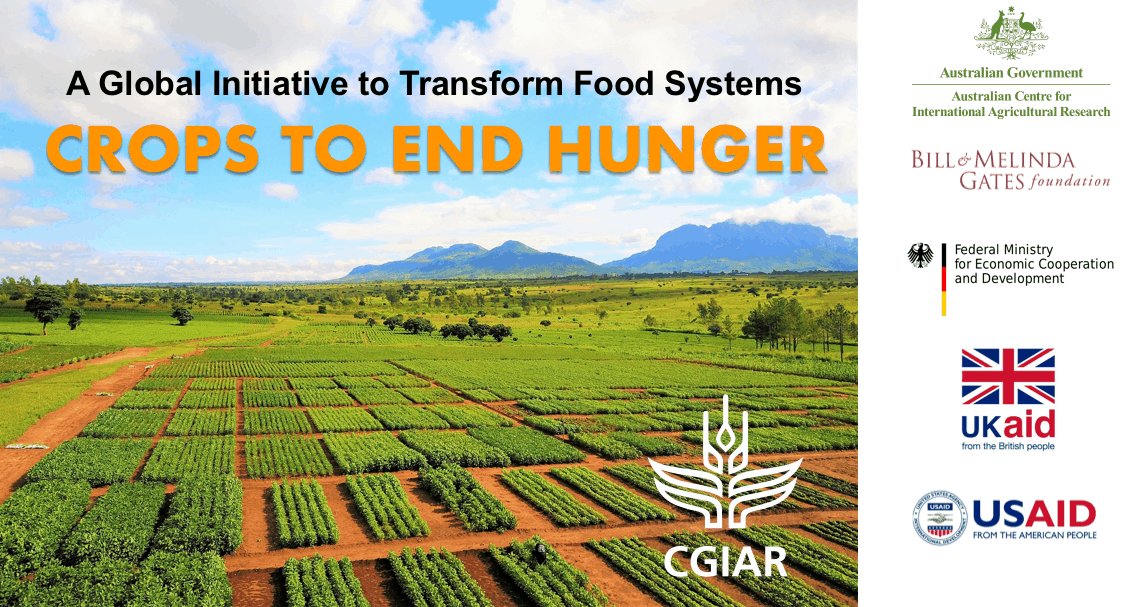Looking ahead, food system researchers and national governments around the world are concerned about achieving Sustainable Development Goal #2 – Zero Hunger – by 2030. Moreover, they are apprehensive about our ability to achieve this goal without increasing agriculture’s impact on the environment.
Improved crop breeding and seed delivery are two innovations that herald great promise for solving this challenge. This morning, in a virtual panel discussion organized by Agrilinks, a group of breeding and seed experts from the private and public sectors reviewed the ideas presented in a recent White Paper drafted by the Crops to End Hunger initiative, an effort sponsored by a small group of development aid funders to accelerate and modernize the design, delivery and widescale use of a steady stream of new crop varieties by CGIAR and their partners in the public and private sectors in the Global South.

Specifically, the White Paper identifies 14 bottlenecks to commercial seed delivery and offers a set of recommendations to overcoming these barriers to put improved crop varieties in the hands of farmers and to streamline a handover of these varieties to the private sector so these varieties can have wide-ranging and inclusive impact on income and nutrition.
“The reasons we published this white paper was to present a more focused, science-based and long-term investment strategy for CGIAR plant breeding,” said Ian Barker, the Global Potato Agri-Food System Program Director at the International Potato Center (CIP), and one of the white paper’s co-authors. “We are using this exercise to modernize our breeding programs to guide genetic innovation within OneCGIAR and to provide funders and implementers with a better framework for future initiatives.”
For bolstering future crop development, all the panelists pointed to the need for improved links between research and development, at the start of the product life cycle (PLC), and in the marketing and distribution needed to scale up the delivery of new varieties.
Nora Lapitan, another co-author, and the Research Community of Practice Lead for USAID’s Bureau for Resilience and Food Security said the team recommends a 10-stage life cycle to optimize our understanding of the breeding process and improve our communication between breeders and the private sector. Stages 1-5 focus on the stages of breeding new varieties in response to meeting market demands, while stages 7-10 note the key points in the marketing and distribution of new crop varieties, including the last stage when products are withdrawn from the market and replaced by new ones.
The key stage, she said, is number 6 which links research with the market through on-site testing of new varieties, registration of these varieties with national authorities, and early generation seed production for sale.
“Requiring new crop varieties to pass stage gate criteria will ensure greater likelihood of adoption and scaling up. And we’ll measure our success through two simple metrics… by measuring the rate of genetic gain in farmers’ fields and the average area-weighted age of varieties in farmers’ fields,” Lapitan said.
Featuring a private sector perspective, Tony Gathungu, the Global Head of Seeds2B with the Syngenta Foundation for Sustainable Agriculture, presented a few key ideas for improving collaboration and impact between research and the market.
“Right now, licensing processes from CGIAR and national breeding programs are challenging. We are not always clear about the value propositions offered by new varieties. Secondly, I think we need fewer varieties overall and more new varieties that are market-led. Finally, scaling up on-farm testing would help ensure the potential genetic gains that can be made.”
Food and nutrition concerns are rising sharply in sub-Saharan African where the needs of a growing population are intensified by the increasing impacts of climate change on agriculture.
Jane Ininda, the Head of Research and Systems Development for AGRA, endorsed Gathungu’s ideas and said market research and improving the production of early generation seed, parent seed of the right varieties at the right time and cost, should be two additional points of focus.
“First we must truly understand what the farmers and the consumers want. And we must use good research to determine their needs. Once we know that, we know these varieties will provide improved nutrition and higher yields,” Ininda said. “But we find that when new crops are ready to go to the market, we cannot produce enough seed to meet initial demands. So we must focus on developing the capacity of small businesses to multiply seeds for the marketplace.”
Bringing these ideas together, Barbara Wells, CIP’s Director General and the recently-appointed Global Director for Genetic Innovation at the CGIAR, said suggestions in the white paper and the many viewpoints among the panel would be used to guide future breeding work at the CGIAR.
“We have set ambitious targets for the next 30 years. We want to provide affordable diets for an additional three billion people, to pull 500 million people out of poverty, and to close gender gaps in agriculture, providing employment for more than 267 million young people. In this context, seed systems are the lifeblood of our agri-food systems. We must get these seeds and varieties into farmers’ hands and we must know what they want.”
